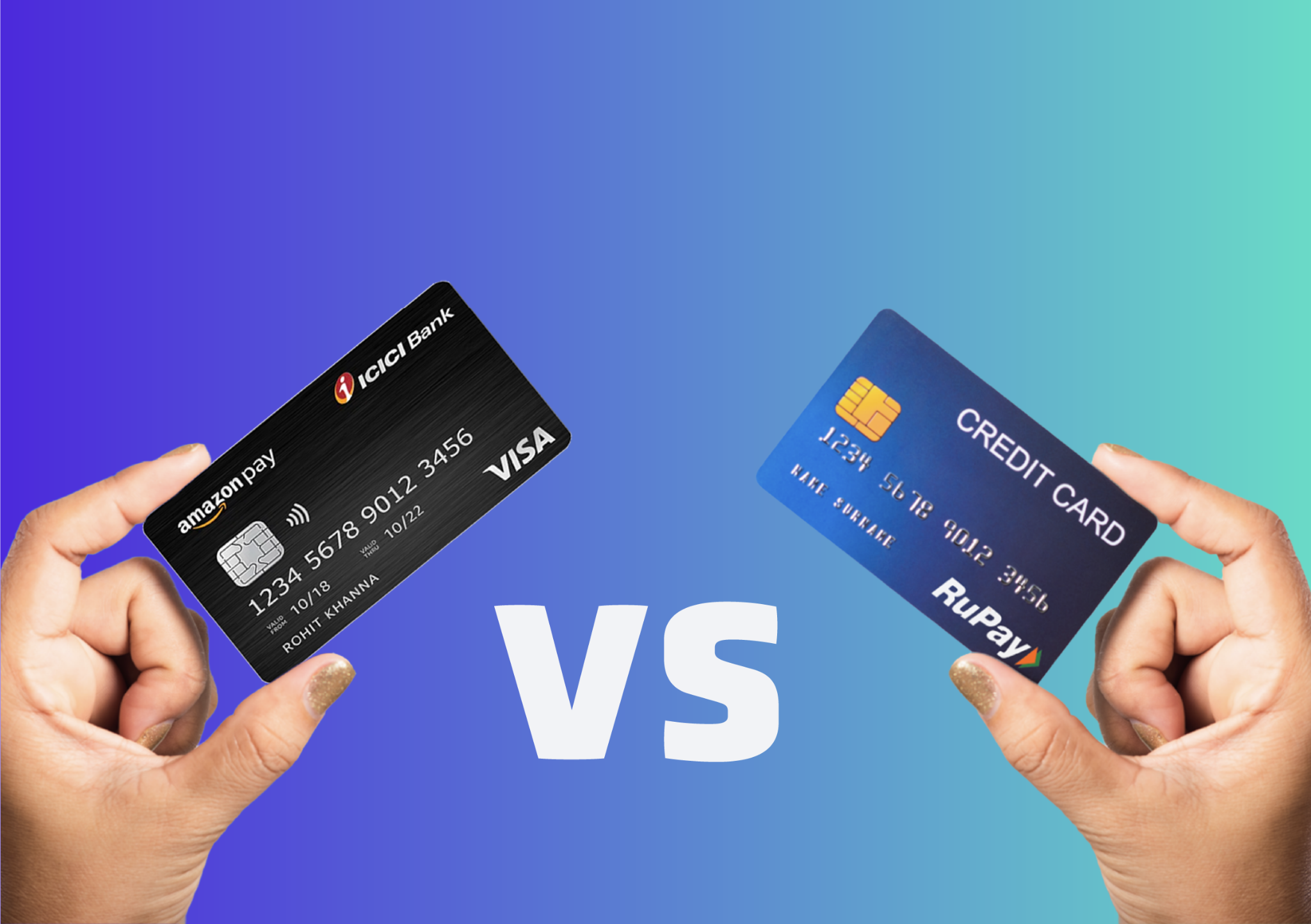Accretive Cleantech Finance Private Limited is now Ecofy Finance Private Limited
RUPAY VS VISA: THE FUTURE OF DIGITAL PAYMENTS IN INDIA
In a world rapidly embracing digital transformation, the financial landscape is witnessing a seismic shift. At the heart of India’s digital payment revolution are two prominent card networks: Rupay and Visa. While both play a pivotal role in facilitating cashless transactions, they differ significantly in features, cost, accessibility, and global reach. This blog unpacks these distinctions to help users make informed choices in the evolving realm of digital payments or digital transactions.

Understanding Rupay and Visa Cards
What is Rupay?
Rupay, an Indian card payment network launched by the National Payments
Corporation of India (NPCI) in 2012, is specifically tailored for the Indian
market. Its primary goal is to provide a low-cost alternative for seamless
domestic transactions.
What is Visa?
Visa, on the other hand, is an international card network headquartered in the
United States. Established in 1958, it enjoys global dominance, enabling
secure transactions across more than 200 countries.
Both Rupay cards and Visa cards cater to the diverse needs of users, but their structural and functional differences often dictate their suitability for different use cases.
Key Features and Differences
1. Transaction Costs
One of the standout features of Rupay is its cost-effectiveness. Unlike Visa,
which charges higher transaction fees due to its international operations,
Rupay cards levy lower fees. This affordability benefits users and merchants,
particularly in India’s rural and semi-urban regions.
2. Domestic vs. Global Reach
Rupay cards excel in domestic usage, with a strong focus on facilitating
transactions within India. However, their international reach is limited.
Visa, in contrast, offers unparalleled global accessibility, making it ideal
for those who frequently travel abroad.
3. Payment Security
Both Rupay and Visa cards prioritize payment security, though they employ
different technologies. Rupay incorporates two-factor authentication for
domestic transactions, aligning with RBI guidelines. Visa, leveraging advanced
fraud detection systems, ensures secure payments on a global scale.
4. Transaction Speed
With its entirely domestic infrastructure, Rupay processes transactions faster
within India. Visa’s processing time may be slightly longer due to its
dependence on international servers.
Advantages of Rupay Cards
- Cost-Effectiveness: Reduced transaction costs make Rupay an affordable choice for everyday use.
- Government Benefits: Many government welfare schemes, such as Jan Dhan Yojana, link to Rupay cards for easy benefit disbursement.
- Local Empowerment: By promoting a domestic payment network, Rupay supports India’s "Make in India" initiative.
- Tailored Features: Rupay offers specialized cards for farmers, pensioners, and students, enhancing financial inclusion.
Advantages of Visa Cards
- Global Acceptance: Visa is accepted across millions of merchants and ATMs worldwide, a feature that Rupay is still developing.
- Comprehensive Support: Its vast network ensures excellent customer service and dispute resolution.
- Value-Added Benefits: Visa cards come with perks like travel insurance, concierge services, and discounts, particularly for premium users.
The Role of Digital Payments in India
India has witnessed exponential growth in digital payments, fueled by
initiatives like UPI (Unified Payments Interface) and the Digital India
campaign. Both Rupay cards and Visa cards contribute to this transformation,
yet their adoption varies depending on user needs.
Urban Preference: Visa cards dominate urban markets due to their global reach and additional privileges.
Rural Penetration: Rupay thrives in rural areas, offering affordable solutions aligned with local requirements.
Choosing the Right Payment System
When deciding between Rupay and Visa, consider the following:
| Criteria | Best Choice |
| Domestic Usage | Rupay |
| Global Travel | Visa |
| Low Transaction Costs | Rupay |
| Added Benefits | Visa |
A hybrid approach might work best for those seeking the affordability of Rupay and the international usability of Visa.
The Future of Rupay and Visa in India
The trajectory of digital payments in India is undeniably
upward. As Rupay continues to expand its international footprint through
partnerships with networks like Discover and JCB, its relevance in global
transactions will grow. Visa, with its established brand and innovation in
fintech, remains a strong player in the market.
Conclusion
Both Rupay cards and Visa cards are
indispensable components of India’s financial ecosystem, each addressing
unique needs. While Rupay supports India’s domestic goals with affordability
and inclusivity, Visa excels in global accessibility and premium services.
The choice between the two depends on individual requirements, such as transaction frequency, location, and spending habits. As India strides toward becoming a digital-first economy, these card networks will continue to play vital roles in shaping the future of digital payments.
FAQs
- What is RuPay? RuPay is India’s domestic payment network, designed for affordable and seamless digital transactions.
- What is Visa? Visa is a global payment network widely used for both domestic and international transactions.
- How is RuPay different from Visa? RuPay focuses on low-cost domestic payments, while Visa offers global reach and value-added services.
- Which is better for domestic transactions in India? RuPay is often preferred for domestic payments due to lower transaction fees and strong local integration.
- Does RuPay support international transactions? Yes, RuPay now supports international transactions through global partnerships, though Visa has wider global acceptance.
- Are digital payments eco-friendly? Yes, digital payments reduce paper usage and carbon footprint, aligning with sustainable practices which Ecofy also supports.
- What is the government’s role in promoting RuPay? The Indian government incentivizes RuPay through schemes like zero MDR (Merchant Discount Rate) for merchants.
- Can I use both RuPay and Visa cards? Yes, you can use both cards depending on your needs for domestic and international transactions.



